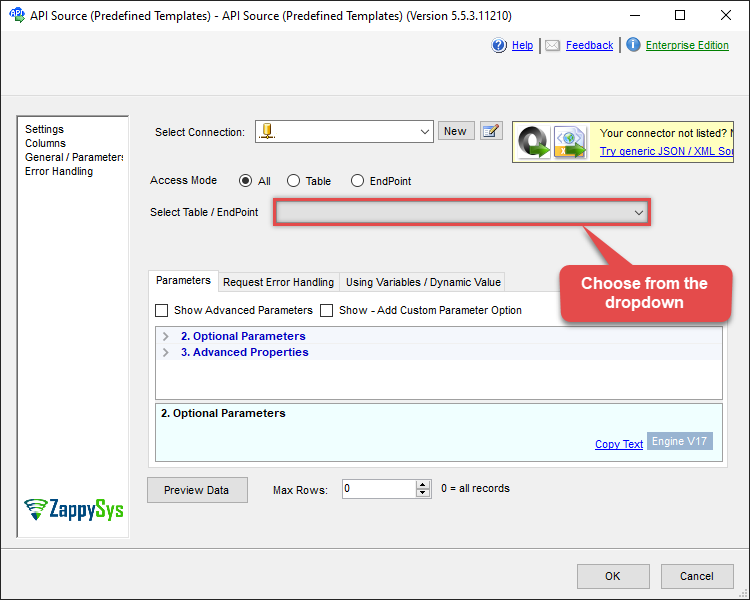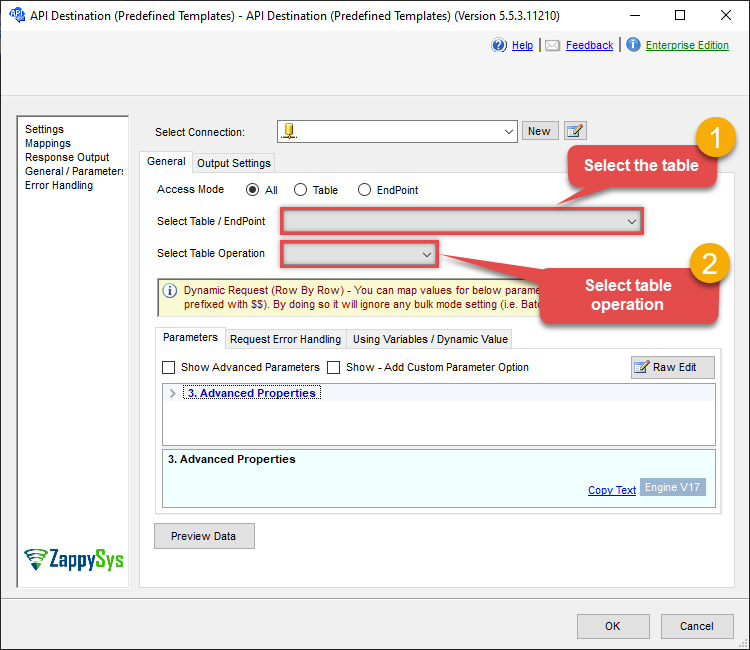Endpoint Delete an item
Name
delete_item
Description
Deletes an item [API reference]
Related Tables
Parameters
| Parameter | Required | Options | ||||||
|---|---|---|---|---|---|---|---|---|
|
Name:
Label: File Id Id of an item you want to delete |
YES | |||||||
|
Name:
Label: Drive Type Default search context is User's drive. Bodies of items (files/documents) to which the query applies. Supported bodies are 'user', 'domain', 'drive', and 'allDrives'. Prefer 'user' or 'drive' to 'allDrives' for efficiency. By default, corpora is set to 'user'. However, this can change depending on the filter set through the 'Query' parameter. |
YES |
|
||||||
|
Name:
Label: Shared DriveId By default file lists from MyDrive but if you like to search other Shared drive (formally known as Team drive) then set this parameter. |
||||||||
|
Name:
Label: Supports all drives (e.g. My and Shared) Whether the requesting application supports both My Drives and shared drives. |
|
Output Columns
| Label | Data Type (SSIS) | Data Type (SQL) | Length | Description |
|---|---|---|---|---|
| Status |
DT_WSTR
|
nvarchar(4000)
|
4000 |
Input Columns
| Label | Data Type (SSIS) | Data Type (SQL) | Length | Description |
|---|---|---|---|---|
| Id |
DT_WSTR
|
nvarchar(4000)
|
4000 |
Examples
SSIS
Use Google Drive Connector in API Source or in API Destination SSIS Data Flow components to read or write data.
API Source
| There are no parameters to configure. |

API Destination
This Endpoint belongs to the Files table, therefore it is better to use it, instead of accessing the endpoint directly. Use this table and table-operation pair to delete an item:
| There are no parameters to configure. |

ODBC application
Use these SQL queries in your ODBC application data source:
Delete a file
Deletes a file
DELETE FROM Files
WITH (Id='1gcu0hV34OTfgvcu9CFhr7Go4b35j5Mop')
--You can get file Id by selecting from 'list_files' endpointDelete a file by name from a shared drive
Delete a file by name from a shared drive
DELETE FROM Files where Name='dump.csv' and Trashed=0 WITH(DriveId='0AC00HWQH144cUk9PVA', DriveType='drive')
--You can get file Id by selecting from 'list_files' endpointDelete a folder
Deletes a folder
DELETE FROM Folders
WITH (Id='1yDO11prsLH9DUrBTCadV6GGMJrITjF9I')
--You can get folder Id by selecting from 'list_folders' endpoint
delete_item endpoint belongs to
Files
, Folders
table(s), and can therefore be used via those table(s).
SQL Server
Use these SQL queries in SQL Server after you create a data source in Data Gateway:
Delete a file
Deletes a file
DECLARE @MyQuery NVARCHAR(MAX) = 'DELETE FROM Files
WITH (Id=''1gcu0hV34OTfgvcu9CFhr7Go4b35j5Mop'')
--You can get file Id by selecting from ''list_files'' endpoint';
EXEC (@MyQuery) AT [LS_TO_GOOGLE_DRIVE_IN_GATEWAY];Delete a file by name from a shared drive
Delete a file by name from a shared drive
DECLARE @MyQuery NVARCHAR(MAX) = 'DELETE FROM Files where Name=''dump.csv'' and Trashed=0 WITH(DriveId=''0AC00HWQH144cUk9PVA'', DriveType=''drive'')
--You can get file Id by selecting from ''list_files'' endpoint';
EXEC (@MyQuery) AT [LS_TO_GOOGLE_DRIVE_IN_GATEWAY];Delete a folder
Deletes a folder
DECLARE @MyQuery NVARCHAR(MAX) = 'DELETE FROM Folders
WITH (Id=''1yDO11prsLH9DUrBTCadV6GGMJrITjF9I'')
--You can get folder Id by selecting from ''list_folders'' endpoint';
EXEC (@MyQuery) AT [LS_TO_GOOGLE_DRIVE_IN_GATEWAY];